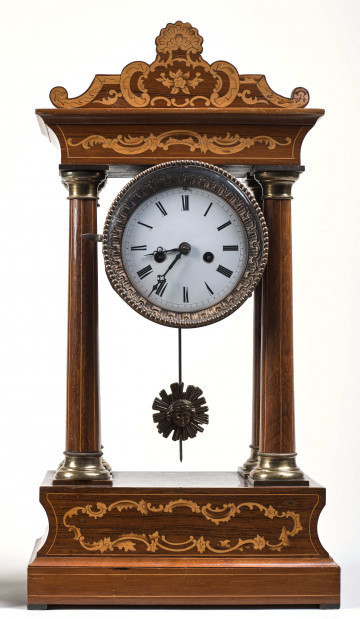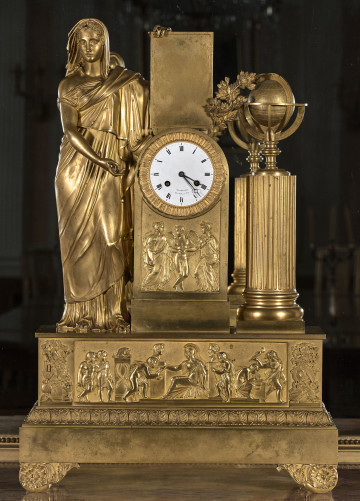
Clock
2nd half of the 18th century
Castle Museum in Łańcut
Part of the collection: Clocks
Small horizontal clocks known as 'tile clocks' (due to the resemblance of their body to a tiled stove) or 'frogs' (due to their widely spread legs) have been produced since the 17th century. They took the form of square and hexagonal boxes made of gilded bronze or brass. Commonly used, in Poland among others. During the counter-reformation, they took the shape of objects of religious worship, e.g. monstrances or crucifixes. The hexagonal tiled clock in Łańcut was mounted on six legs-balls. It is adorned with bands of pearls along with elements of floral and leaf openwork. On the dial of the clock, Roman numerals indicate hours and the Arabic ones - minutes. The clock's setting, in the form of a hexagonal case, has been preserved. The case is made of sheet metal; decorative strips with round openings have been applied to its edges and corners. The bottom of the case is wooden with a six-petal rosette. The lid with a moveable centre allows the dial to be uncovered.
Dimensions
height: 11 cm, width: 12 cm
Object type
Clocks
Technique
watchmaking
Material
wood, brass, sheet metal
Creation time / dating
Owner
Castle Museum in Łańcut
Identification number
Location / status

2nd half of the 18th century
Castle Museum in Łańcut

19th (?) century
Castle Museum in Łańcut

19th (?) century
Castle Museum in Łańcut
DISCOVER this TOPIC
Museum of King Jan III's Palace at Wilanów
DISCOVER this PATH
Educational path